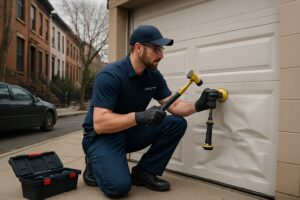In the world of advanced defense technologies, CTS Testing—short for Captive Trajectory System Testing—plays a crucial role in weapon and missile system development. It refers to the method of testing a weapon system in a controlled environment where it is attached to a platform, often an aircraft, and flown along a predefined trajectory. The system remains “captive” throughout the flight, meaning it is not released or fired, but data is collected on how it would perform in actual use. This testing is fundamental for assessing flight characteristics, target acquisition, sensor data, and safety mechanisms before a live launch is ever attempted.
Captive Trajectory System Testing: The Science Behind It
Captive Trajectory System Testing is a step between simulation and full-scale live testing. During this process, a missile or guided munition is mounted securely under a test aircraft or drone. The weapon’s sensors, tracking systems, and guidance modules are activated, collecting real-time data as the aircraft follows the exact path the missile would take if it were launched.
The primary objective of Captive Trajectory System Testing is to evaluate how the weapon interacts with real-world variables such as wind speed, altitude, target movement, and terrain. It helps in validating guidance algorithms and sensor responses without the expense and danger of an actual missile release. Engineers use this data to improve the weapon’s targeting accuracy, response time, and environmental adaptability.
Why CTS Testing Is Critical in Modern Warfare
Modern warfare depends heavily on precision and reliability. A misfired missile or inaccurate strike could lead to mission failure or unintended casualties. CTS Testing minimizes such risks by offering developers a chance to refine the system in a controlled setting.
Moreover, international arms regulations and military protocols often require multiple levels of validation before a weapon system is approved for operational use. CTS Testing serves as an early validation step that identifies issues before live firing takes place. This saves time, money, and potentially lives.
Key Components of a CTS Test Setup
CTS Testing involves a complex setup combining aeronautical, mechanical, and electronic components. The key parts include:
-
Test Platform – Usually a fighter jet, drone, or specially equipped aircraft that carries the captive weapon.
-
Captive Weapon System – The missile or guided munition being tested.
-
Telemetry and Data Systems – For collecting data from the weapon in real-time.
-
Ground Control Stations – Where engineers monitor and analyze incoming data during the test flight.
-
Sensor Suites – Including GPS, radar, IR, and optical sensors that simulate and collect environmental data.
All these components work together to mimic real launch conditions as closely as possible.
Applications of CTS Testing in Military Programs
CTS Testing is used by armed forces across the world for a variety of weapons, including:
-
Air-to-Air Missiles like AIM-9 Sidewinder or AMRAAM
-
Air-to-Ground Precision-Guided Munitions
-
Anti-Radiation Missiles
-
Hypersonic Weapons
-
UAV-Launched Systems
By using CTS methods, military programs can detect faults or inefficiencies in early stages, allowing better refinement and faster deployment schedules.
Advantages of CTS Testing Over Live Fire Tests
While live fire tests are essential for final validation, CTS Testing offers several unique advantages:
-
Cost Efficiency: Live munitions are expensive, and their use involves significant logistics and risk. CTS Testing reduces repeated need for full-scale launches.
-
Safety: No actual firing reduces risk to personnel and equipment.
-
Real-Time Diagnostics: Data is gathered instantly and can be analyzed for immediate feedback.
-
Environmental Control: Conditions can be managed to test specific scenarios, such as high-altitude performance or rapid target movement.
These benefits make CTS Testing a preferred option for early-stage and mid-level evaluations in the weapon development lifecycle.
Recent Advancements in CTS Testing Technology
As technology progresses, so does the sophistication of Captive Trajectory System Testing. Innovations include:
-
AI-based Data Analysis: Machine learning models help detect patterns or failures in test data.
-
Simulation Integration: Virtual environments can now be combined with real-world data from CTS flights.
-
Smaller, Modular Test Systems: For use on UAVs and smaller aircraft, reducing cost and increasing flexibility.
These advancements are helping developers achieve faster development cycles and more agile weapons systems.




